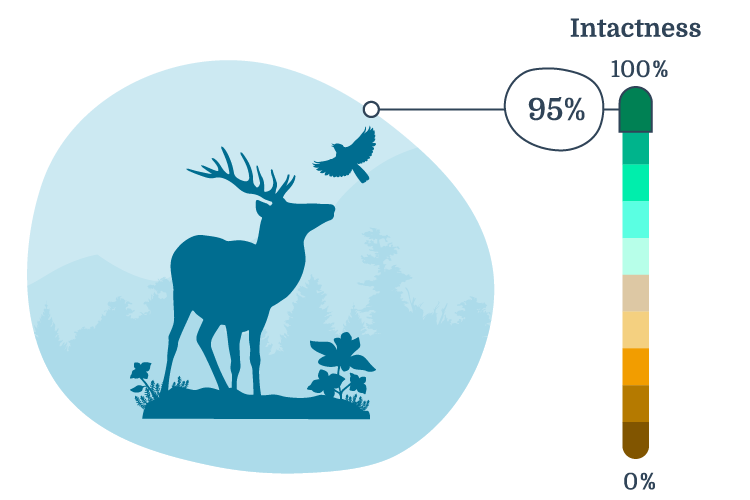Status of Overall Biodiversity
Summary of the status of overall biodiversity and that of six taxonomic groups in Tolko's Northern Operating Area, based on the Biodiversity Intactness Index.
Status of Biodiversity
- Intactness was over 90% for all taxonomic groups, indicating habitat is in good condition in the Northern Operating Area.
- While intactness was high, all groups except mammals had some species with disproportionately low intactness—the drop in intactness from 100% was greater than the percentage of human footprint in the region.
- For many species of birds, mammals, soil mites, and vascular plants, habitat suitability is predicted to increase as a result of human footprint; these species are often habitat generalists that use both native habitat and human footprint.
Introduction
The ABMI uses the Biodiversity Intactness Index[1] to assess the status of overall biodiversity in a region.
- The index shows how much human footprint has affected species as a result of changes to habitat suitability[1]. Habitats with minimal disturbance have high intactness scores compared to highly modified habitats, which have low intactness scores.
-
In the Northern Operating Area, biodiversity is managed as part of the “values, objectives, indicators, and targets” (VOIT) approach to sustainable forest management; biodiversity is one of six criteria considered under this framework[2]. There are several objectives, indicators, and targets to maintain biodiversity, for example, retaining a full range of forest types in all age classes and maintaining habitats for high-value species[2].
-
The Biodiversity Intactness Index is one way to assess the status of biodiversity in a managed forest landscape.
In this section we summarize overall intactness and present results for six taxonomic groups that represent a diverse subset of all species in the region: birds, mammals, soil mites, native vascular plants, mosses, and lichens.
Results
Biodiversity Intactness
The overall intactness of 586 common species in the Northern Operating Area as measured by the Biodiversity Intactness Index was:
Average intactness for each taxonomic group was:
Birds
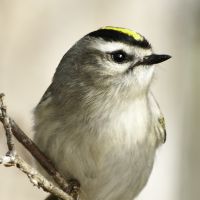
Mammals
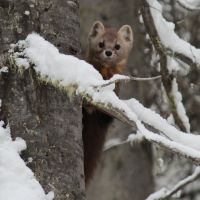
Soil Mites
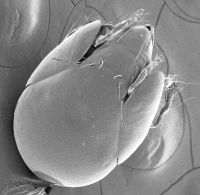
Vascular Plants
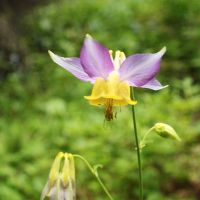
Mosses
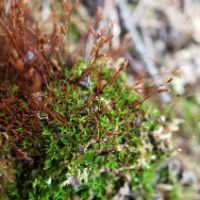
Lichens
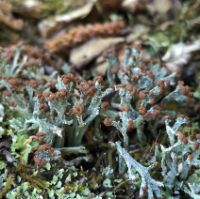
Highlights
- Intactness was over 90% for all taxonomic groups, ranging from 94% for vascular plants to 97% for soil mites, indicating that habitat across the Northern Operating Area is in good condition. Intactness is high because human footprint is generally low across the region.
- While intactness was high for both lichen (96%) and moss (95%) species, habitat suitability was lower than expected for the majority of lichen (80%) and moss (~70%) species. There may be more decreaser species (species for whom habitat suitability declines as a result of human footprint) in these two groups because many of these species are most abundant in older forest and are affected by activities that alter their preferred habitat.
- For birds, mammals, soil mites and vascular plants, deviation from intact reference conditions was also due to a number of increaser species; habitat suitability is predicted to increase as a result of human footprint for these species. Many increaser species benefit from human footprint and are otherwise relatively uncommon in native vegetation, while others are habitat generalists that use both native habitat and human footprint.
- All groups except mammals had some “strong decreaser” species with disproportionately low intactness—the drop in intactness from 100% was greater than the percentage of human footprint in the region. Some of these species are associated with mature/old coniferous forest and are negatively impacted by activities that impact their preferred habitat.
- Results for each taxonomic group can be viewed by selecting a tab below.
Biodiversity Intactness. Distribution of species intactness by taxonomic group in the Northern Operating Area. Solid line at 100% indicates no difference in habitat suitability between the current landscape with human footprint and the modelled reference landscape without human footprint. The location of the data point relative to the reference line indicates whether habitat suitability for the species is predicted to decrease or increase relative to reference conditions; both positive and negative deviations from reference results in lower intactness. Each data point represents an individual species; hover over a data point to view the intactness value for an individual species.
Results
Intactness by Taxonomic Group
The ABMI assessed species intactness across six taxonomic groups—birds, mammals, soil mites, vascular plants, mosses, and lichens. Highlighted species include those showing the greatest differences from intact reference conditions, including decreaser species with lower habitat suitability under current conditions with human footprint, and increaser species with improved habitat suitability.
Click on a species group to view intactness results:
Birds
Bird Intactness
The overall intactness of 77 bird species as measured by the Biodiversity Intactness Index was:
Golden-crowned Kinglet (82% intact)

Habitat suitability decreased for the Golden-crowned Kinglet, which prefers to breed in mature and old coniferous forests, especially those dominated by spruce.
Brown Creeper (82% intact)
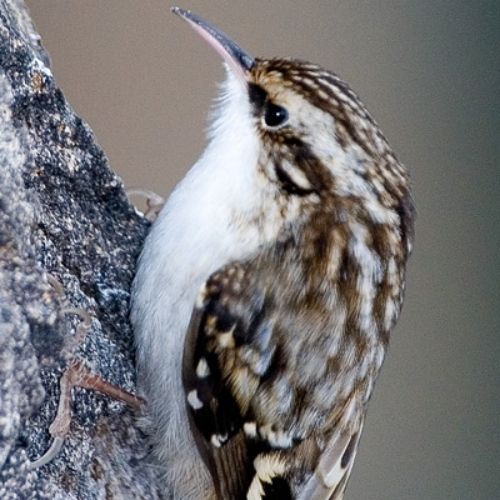
Habitat suitability decreased for the Brown Creeper—an old-forest specialist that selects the largest live or dead trees for nesting and foraging.
Philadelphia Vireo (90% intact)

Habitat suitability increased for the Philadelphia Vireo, which is associated with early successional forests, including those created by forest harvest.
Bird Highlights
- Intactness ranged from 82% to 100% for bird species in Tolko’s Northern Operating Area, with habitat suitability declining as a result of human footprint for 51% of bird species, and improving for 49% of species.
- The species with the largest decreases in habitat suitability rely on mature/old forest to meet their habitat requirements for nesting and foraging. For example, Golden-crowned Kinglet (82% intact) and Brown Creeper (82% intact) are generally associated with older forests.
- Habitat suitability increased for 49% of bird species in the Northern Operating Area. Some of these species, such as Alder Flycatcher (82% intact) and Red-eyed Vireo (89% intact), prefer younger, more open stands, and respond positively to forest harvest. Similarly, shrub nesting species like the Common Yellowthroat (92% intact) and American Redstart (91% intact) also respond positively to the habitat created by forest harvest.
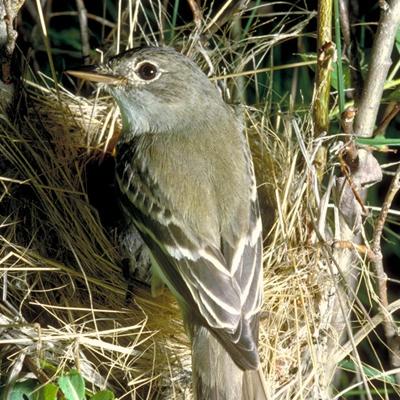
Alder Flycatchers (82% intact) nest in shrubby vegetation near open habitats like regenerating harvested stands.
Bird Intactness. Intactness for bird species in the Northern Operating Area, circa 2021. Solid line at 100% indicates no difference in expected habitat suitability between the current landscape with human footprint and the modelled reference landscape without human footprint. Data points indicate deviation from 100% intact; for example, 75% intact indicates greater deviation from reference conditions than 99% intact. The location of the data point relative to the reference line indicates whether habitat suitability for the species is predicted to decrease or increase relative to reference conditions; both positive and negative deviations from reference results in lower intactness. Hover over a point to view intactness for each species.
Mammals
Mammal Intactness
The overall intactness of 11 mammal species as measured by the Biodiversity Intactness Index was:
Marten (97% intact)

Habitat suitability decreased for Marten, which use habitat elements such as coarse woody debris, snags, and a dense understory as cover, mostly in mature/old coniferous forests.
Canada Lynx (93% intact)
.jpg)
Habitat suitability increased for Canada Lynx. Regenerating young forest provides this species with cover and also provides habitat for its preferred prey, Snowshoe Hare (96% intact; habitat suitability increased).
Red Fox (94% intact)
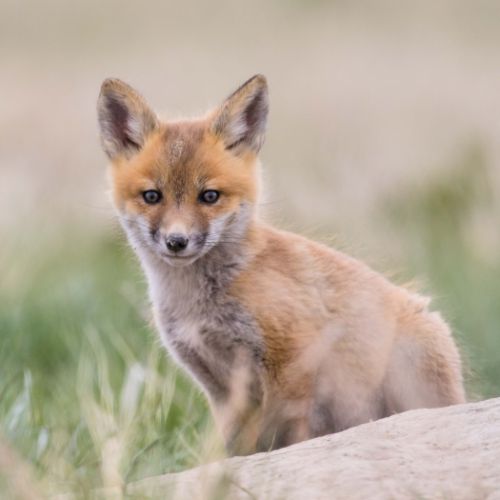
Habitat suitability increased for the canid species, including Red Fox. These species are generalists that are able to use a variety of disturbed and undisturbed habitats.
Mammals Highlights
- Intactness was over 90% for all mammal species in Tolko’s Northern Operating Area, ranging from 93% to 100%. Many of these mammal species are habitat generalists and show relatively little response to scattered human footprint, resulting in higher intactness.
- Habitat suitability decreased the most for Wolverine (93% intact) in the current landscape compared to intact reference conditions. Wolverine is a species of conservation concern that is known to prefer remote habitat in large, undisturbed areas.
- Habitat suitability increased the most for Canada Lynx (93% intact). The lynx prefers early- to mid-successional forested habitat with a dense understory—habitat that is created in regenerating harvested stands.
- Habitat suitability increased for the three canid species—Gray Wolf (95% intact), Coyote (95% intact), and Red Fox (94% intact). All three species are generalists and will use a variety of habitats as long as there is sufficient food available.

Fishers (98% intact) prefer continuous forest cover and are more likely to be found in old coniferous forests.
Mammal Intactness. Intactness for mammal species in the Northern Operating Area, circa 2021. Solid line at 100% indicates no difference in expected habitat suitability between the current landscape with human footprint and the modelled reference landscape without human footprint. Data points indicate deviation from 100% intact; for example, 75% intact indicates greater deviation from reference conditions than 99% intact. The location of the data point relative to the reference line indicates whether habitat suitability for the species is predicted to decrease or increase relative to reference conditions; both positive and negative deviations from reference results in lower intactness. Hover over a point to view intactness for each species.
Soil Mites
Soil Mite Intactness
The overall intactness of 73 mite species as measured by the Biodiversity Intactness Index was:
Eremaeus translamellatus (90% intact)

Habitat suitability decreased for Eremaeus translamellatus, which is associated with old coniferous forests in the boreal forest, where it can be found in leaf litter, logs, moss, and even rodent nests.
Epidamaeus arcticola (92% intact)
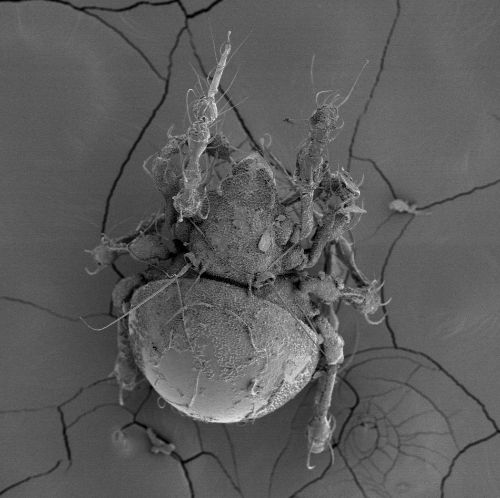
Habitat suitability decreased for Epidamaeus arcticola, which is associated with old White Spruce forests, and responds negatively to forest harvest.
Tectocepheus sarekensis (91% intact)
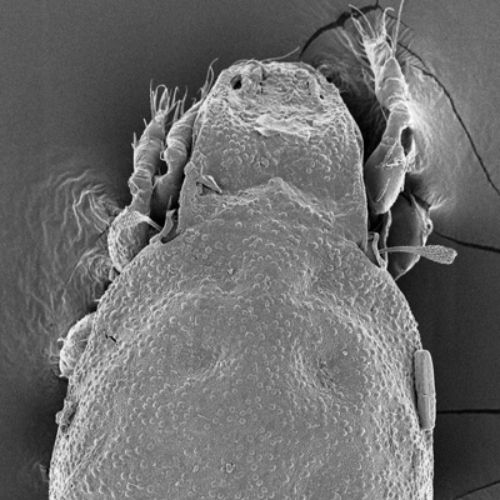
Habitat suitability increased for Tectocepheus sarekensis, which is a common species that responds positively to all types of human footprint.
Soil Mite Highlights
- Intactness ranged from 82% to 100% for soil mite species in Tolko’s Northern Operating Area, with habitat suitability declining as a result of human footprint for 59% of soil mite species, and improving for 41% of species.
- Of the species with the largest decreases in habitat suitability, many are associated with mature/old forest habitat attributes such as a substantial layer of forest litter[3]. For example, Eremaeus translamellatus (90% intact) is associated with old pine, Black Spruce, and White Spruce stands in the boreal forest; all human footprint types reduce habitat suitability for this species.
- The species with the largest increases in habitat suitability are either associated with human footprint, including forest harvest, or are associated with open habitats. For example, Oribatodes mirabilis (92% intact) is strongly associated with 10- to 20-year-old harvested White Spruce, deciduous, and mixedwood stands in the boreal forest.

Neogymnobates luteus (86% intact) is associated with old pine and White Spruce forests.
Soil Mite Intactness. Intactness for soil mite species in the Northern Operating Area, circa 2021. Solid line at 100% indicates no difference in expected habitat suitability between the current landscape with human footprint and the modelled reference landscape without human footprint. Data points indicate deviation from 100% intact; for example, 75% intact indicates greater deviation from reference conditions than 99% intact. The location of the data point relative to the reference line indicates whether habitat suitability for the species is predicted to decrease or increase relative to reference conditions; both positive and negative deviations from reference results in lower intactness. Hover over a point to view intactness for each species.
Vascular Plants
Vascular Plant Intactness
The overall intactness of 219 vascular plant species as measured by the Biodiversity Intactness Index was:
Heart-leaved Twayblade (81% intact)
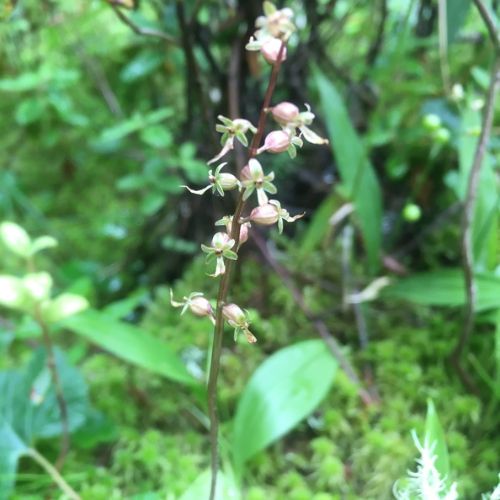
Habitat suitability decreased for Heart-leaved Twayblade, which typically grows in mature/old coniferous stands.
Shrubby Cinquefoil (87% intact)
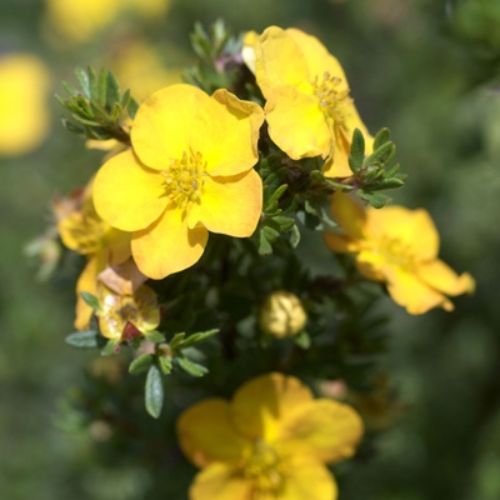
Habitat suitability decreased for Shrubby Cinquefoil, which prefers moist soil and old White Spruce forest stands.
Hay Sedge (Carex foenea; 66% intact)
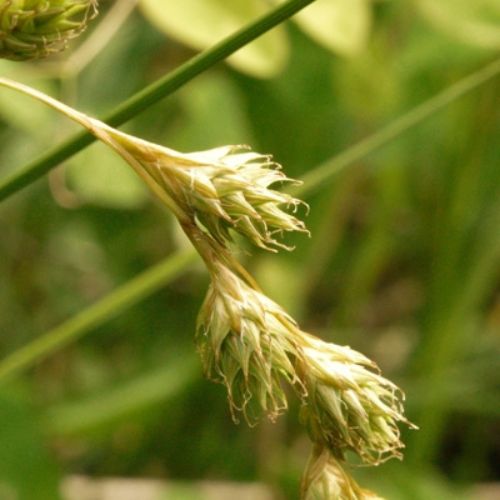
Habitat suitability increased for Hay Sedge, which responds positively to forest harvest and non-agricultural human footprint types.
Vascular Plant Highlights
- Intactness ranged from 36% to 100% for vascular plant species in Tolko’s Northern Operating Area, with habitat suitability increasing as a result of human footprint for 61% of vascular plant species, and declining for 39% of species.
- The species with the largest decreases in habitat suitability are all associated with mature/old forests and respond negatively to human footprint. For example, Small Enchanter’s Nightshade (89% intact) and One Flowered Wintergreen (88% intact) are shade-tolerant evergreen understory species that are common in the understory of mature/old White Spruce forests.
- The vascular plant species with the largest increases in habitat suitability are all associated with human footprint, young harvested stands, or both. Several of these species are also associated with wetlands or moist soils. For example, Small Fruited Bulrush (56% intact) is associated with wet, open areas that increase with forest harvest.

One Flowered Wintergreen (88% intact) is associated with mature, moist, coniferous forests.
Vascular Plant Intactness. Intactness for vascular plant species in the Northern Operating Area, circa 2021. Solid line at 100% indicates no difference in expected habitat suitability between the current landscape with human footprint and the modelled reference landscape without human footprint. Data points indicate deviation from 100% intact; for example, 75% intact indicates greater deviation from reference conditions than 99% intact. The location of the data point relative to the reference line indicates whether habitat suitability for the species is predicted to decrease or increase relative to reference conditions; both positive and negative deviations from reference results in lower intactness. Hover over a point to view intactness for each species.
Mosses
Moss Intactness
The overall intactness of 104 moss species as measured by the Biodiversity Intactness Index was:
Red-mouthed Leafy Moss (82% intact)
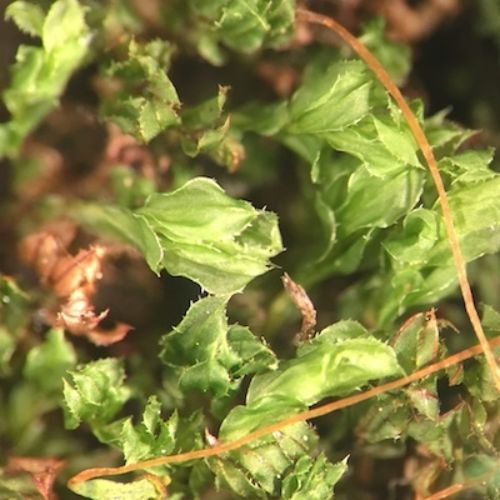
Habitat suitability decreased for Red-mouthed Leafy Moss, which is found on rotten logs, moist soil or humus in older forested stands.
Whip Fork Moss (90% intact)
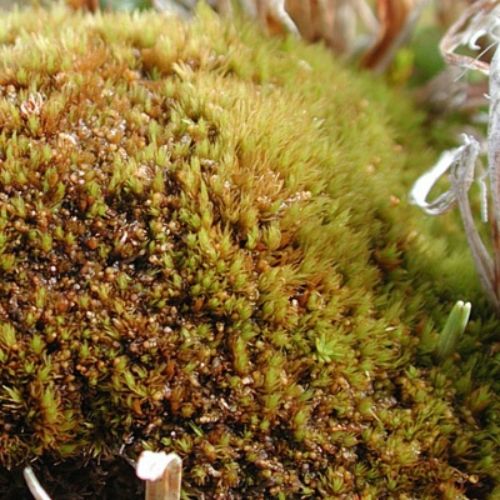
Habitat suitability decreased for Whip Fork Moss, which is associated with old coniferous forests, and does not occur in areas with human footprint.
Purple Moss (96% intact)
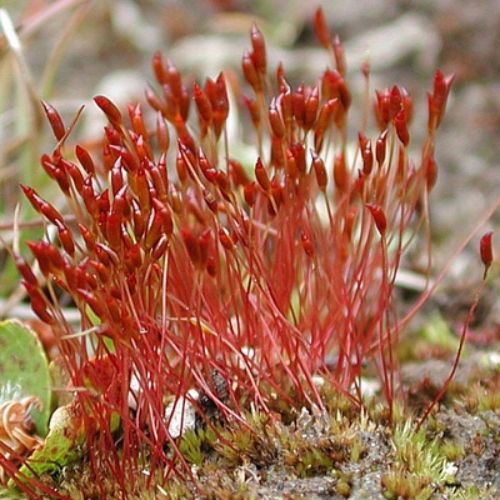
Habitat suitability increased for Purple Moss, which is a common species that is associated with young forest stands and responds positively to human footprint.
Moss Highlights
- Intactness ranged from 63% to 100% for moss species in Tolko’s Northern Operating Area, with habitat suitability declining as a result of human footprint for 71% of moss species, and improving for 29% of species.
- The moss species with the largest decreases in habitat suitability rely on mature/old forest to meet their habitat requirements for shade and moisture. For example, Fuscous Moss (88% intact) and Red-mouthed Leafy Moss (82% intact) are associated with older White Spruce and old mixedwood forest, and are virtually absent in areas with human footprint.
- The moss species with increases in habitat suitability are not associated with old coniferous forest and are generally widespread, indicating that they can grow in a variety of conditions. Habitat suitability improved the most for the Bonfire Moss (72% intact); this species is associated with young harvested forest stands and other types of human footprint, such as industrial sites and well sites.

Red Beard Moss (91% intact) is associated with old coniferous forest stands, particularly White Spruce stands.
Moss Intactness. Intactness for moss species in the Northern Operating Area, circa 2021. Solid line at 100% indicates no difference in expected habitat suitability between the current landscape with human footprint and the modelled reference landscape without human footprint. Data points indicate deviation from 100% intact; for example, 75% intact indicates greater deviation from reference conditions than 99% intact. The location of the data point relative to the reference line indicates whether habitat suitability for the species is predicted to decrease or increase relative to reference conditions; both positive and negative deviations from reference results in lower intactness. Hover over a point to view intactness for each species.
Lichens
Lichen Intactness
The overall intactness of 99 lichen species as measured by the Biodiversity Intactness Index was:
Concentric Pelt (90% intact)

Habitat suitability decreased for Concentric Pelt, which is a common occupant of shady forest floors and rotten logs.
Blister Paw (82% intact)
Habitat suitability decreased for Blister Paw, which is associated with old forest stands, and does not occur in areas with human footprint.
Peg-leg Soldiers (93% intact)

Habitat suitability increased for Peg-leg Soldiers, which is found in younger forest stands and is associated with shrub habitat.
Lichen Highlights
- Intactness ranged from 73% to 100% for lichen species in Tolko’s Northern Operating Area, with habitat suitability declining as a result of human footprint for 85% of lichen species, and improving for 15% of species.
- Many of the lichen species with the largest decreases in habitat suitability rely on mature/old forest to meet their habitat requirements, and rarely occur in areas with human footprint. For example, the species with the largest decrease in habitat suitability was Angel’s Hair (73% intact), which is associated with old coniferous forest, especially old White Spruce stands.
- For the lichen species with increases in habitat suitability, most are associated with harvested stands. About half of the increaser species are adapted to disturbance and prefer open or early successional habitats; an example is British Soldiers (97% intact).

Lichens in the Ramalina pollinaria group (90% intact) are associated with old White Spruce and deciduous forest stands.
Lichen Intactness. Intactness for lichen species in the Northern Operating Area, circa 2021. Solid line at 100% indicates no difference in expected habitat suitability between the current landscape with human footprint and the modelled reference landscape without human footprint. Data points indicate deviation from 100% intact; for example, 75% intact indicates greater deviation from reference conditions than 99% intact. The location of the data point relative to the reference line indicates whether habitat suitability for the species is predicted to decrease or increase relative to reference conditions; both positive and negative deviations from reference results in lower intactness. Hover over a point to view intactness for each species.
References
ABMI. 2017. ABMI essentials: intactness. Available at: https://abmi.ca/publication/496
Tolko Industries Ltd., Norbord Inc., and La Crete Sawmills Ltd. 2017. Forest management plan. Forest management plan submitted to Alberta Agriculture and Forestry December 2017 for FMU26. 375 pp.
Meehan, M.L., Z. Song, L.M. Lumley, T.P. Cobb and H. Proctor. 2019. Soil mites as bioindicators of disturbance in the boreal forest in northern Alberta, Canada: testing taxonomic sufficiency at multiple taxonomic levels. Ecological Indicators 102: 349-365.


